Medical research charity Welcome Trust has been bringing together some of the most spectacular images in biomedical research under their yearly Welcome Image Awards. They aim to “recognise the creators of the most informative, striking and technically excellent images that communicate significant aspects of biomedical science.” And the submissions certainly are all of those things — combing trough the entries of this 19-edition long contest, I can’t help but be slack-jawed in amazement at how beautiful life is.
This year is no different. Capturing images from the very tiny all the way to a heart as big as your head, the entries are a veritable celebration of life. So here are some highlights of this year’s winner’s gallery — sit back, and enjoy.
Our thanks to the Welcome Image Awards team for providing the pictures.

Image credits Sílvia A Ferreira, Cristina Lopo, Eileen Gentleman / King’s College London.
Stem cells are yet undifferentiated cells that can divide to produce almost any cells found in the human body. This particular cell was harvested from the hip bone of a healthy patient, who donated bone marrow to help those experiencing complications after receiving a transplant.
The cell is resting in a chemical mixture that mimics its natural environment inside the body so that the team can observe how it behaves in-vivo. To take the shot, researchers flash-froze the sample, then put it under an electron microscope.
Also, it kind of looks like an exploding star doesn’t it?

Image credits Fernán Federici / Pontificia Universidad Católica de Chile / University of Cambridge.
Maize is one of the most widely grown cereal crops in the world, but not many people have ever seen it like this. The image is approximately 250 micrometres (0.25 mm) wide. It’s up close enough that you can see each individual cell and their nucleus — the green rectangular shapes and orange circles. It was taken in collaboration with Jim Haseloff and OpenPlant Cambridge.
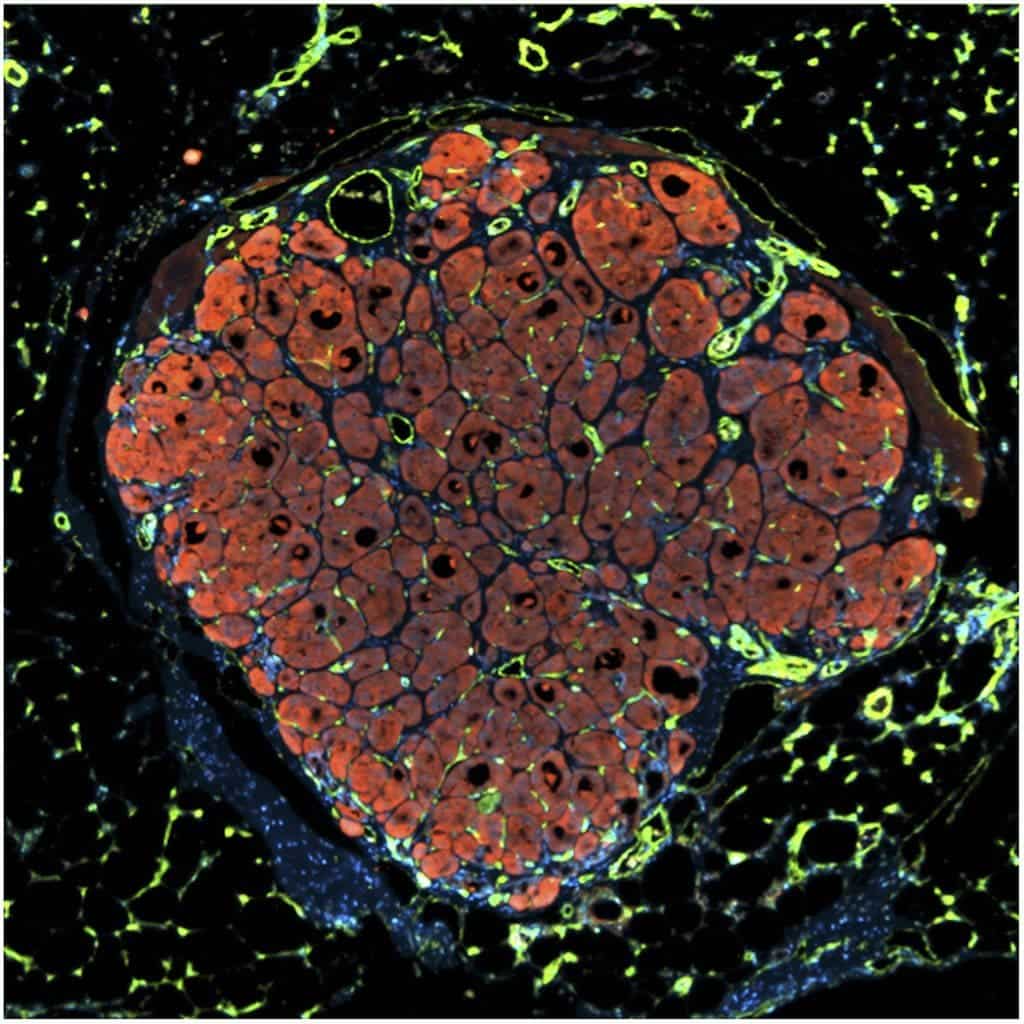
Image credits Chelsea Fortin, Kelly Stevens and Sangeeta Bhatia / Koch Institute, © MIT.
Human liver cells (red/orange) and human blood vessels (green) in the new liver have grouped together and started to grow using blood (white) from the mouse to help. Development of blood vessels in organs like the liver has previously been very difficult, which has been a major barrier to scaling up small implants like these for medical use. The liver can regenerate itself but certain types of damage are irreversible, and there is a growing shortage of replacement organs.
Researchers hope that one day, implants like this could be used to repair livers damaged by liver disease, cirrhosis or cancer. The image is 1.1 mm wide.
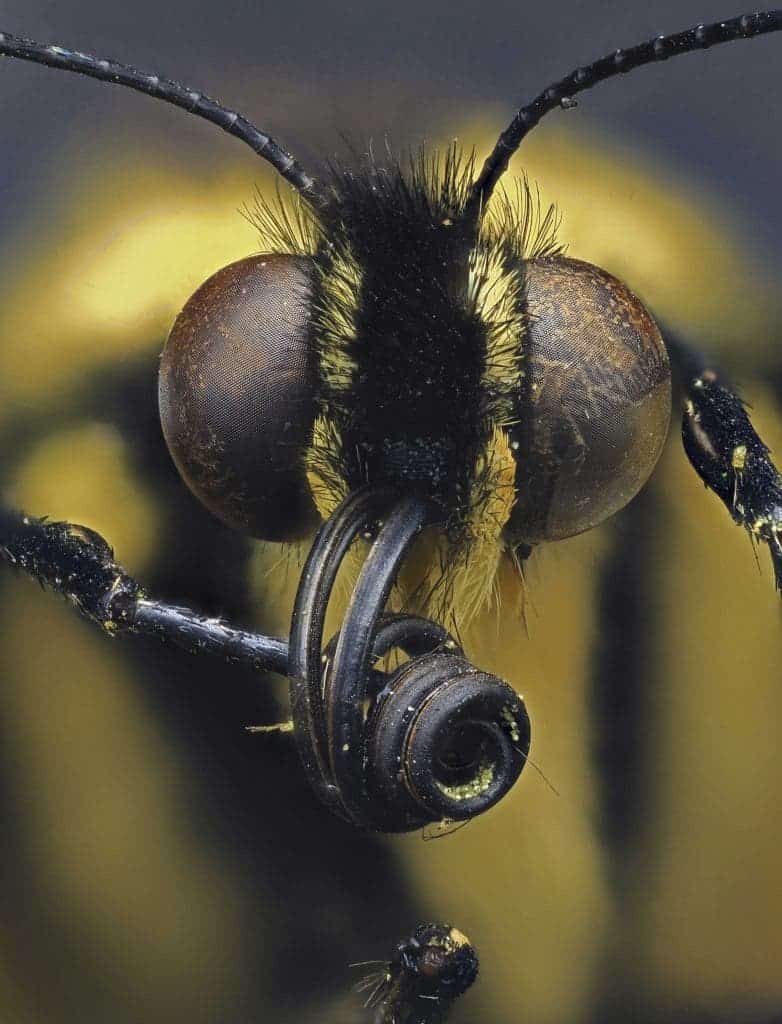
Image credits Daniel Saftner / Macroscopic Solutions.
Butterflies have two large compound eyes to see quick movements and a pair of antennae which pick up smells. The proboscis (their long feeding tube) is curled up like a spring here, but it unrolls so the butterfly can use it like a straw to drink nectar from flowers. Swallowtail butterflies are widely distributed around the world and are often found in wetlands such as marshes and fens. They get their name from their characteristic hindwing extensions, which are reminiscent of a swallow’s tail. This image is 5 mm wide.

Image credits Michael Frank / Royal Veterinary College
The heart was preserved in formalin in a Perspex container and was photographed in the Anatomy Museum of the Royal Veterinary College in London. It measures 27 cm from top to bottom and is roughly four times the size of a human heart.
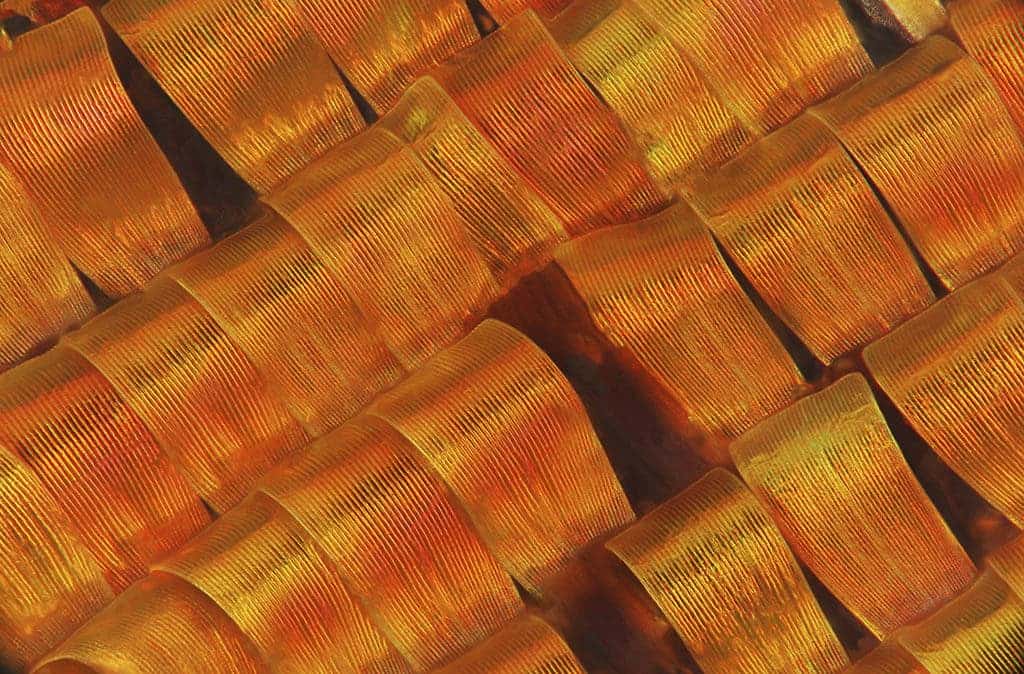
Image credits Mark R Smith / Macroscopic Solutions.
Close-up shot of the scales on a Madagascan sunset moth (Chrysiridia rhipheus). This large colourful moth is most active during the day, unlike most other moths which are nocturnal. It is native to Madagascar and is often mistaken for a butterfly. As it flaps its wings during flight, they shimmer in the light and change colour, but these colours are an illusion. They come from light bouncing off the curved scales at different angles. The wings themselves hardly contain any colour pigment or dye. This image is 750 micrometres (0.75 mm) wide.
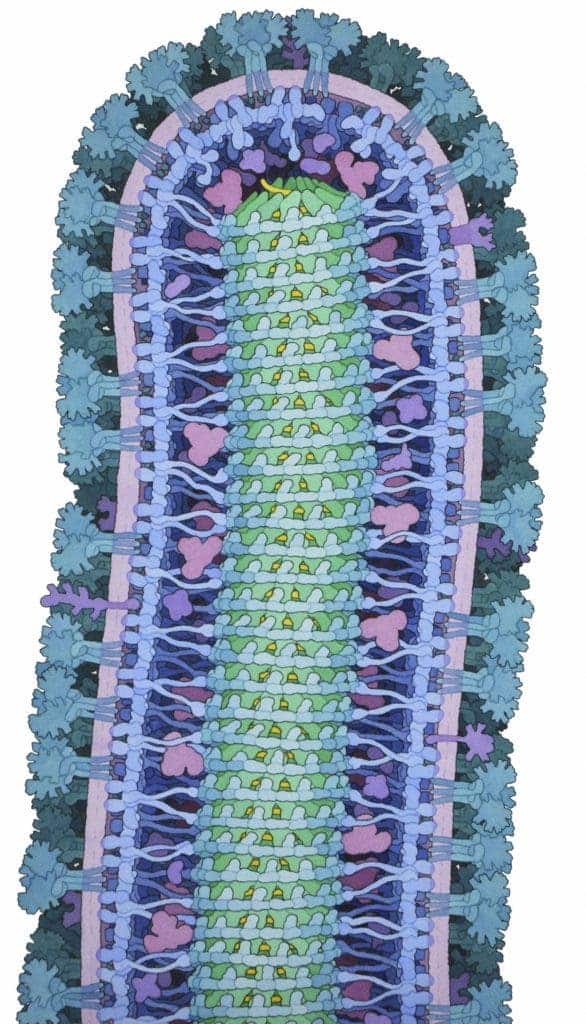
Image credits David S Goodsell / RCSB Protein Data Bank.
Ebola was first discovered in mid-1970s Africa but has really found its way into the public’s attention following the tragic outbreaks we’ve seen a few years ago. It can cause severe illness and often proves fatal to the host. This watercolour and ink illustration takes a look inside an Ebola virus particle.
The pink/purple membrane surrounding it is stolen from an infected cell. The broccoli-like turquoise proteins on the membrane attach to the cells that the virus infects. A layer of proteins (blue) supports the membrane on the inside. Genetic information in the form of RNA (yellow) is stored in a cylinder called a nucleocapsid (green) in the centre of the virus. This whole virus is approximately 100 nanometres (0.0001 mm) wide, which is 200 times smaller than many of the cells that it infects.
This picture was selected as the overall winner of this year’s contest.
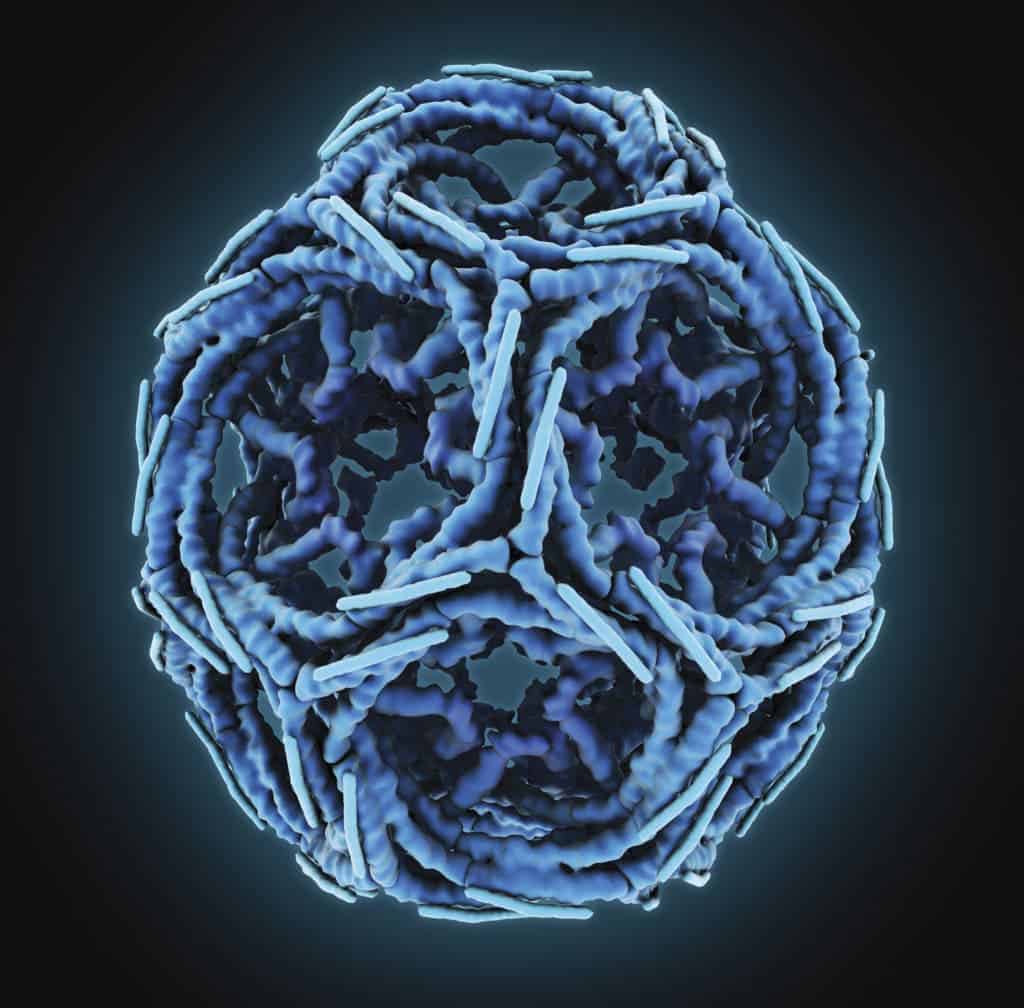
Image credits Maria Voigt / RCSB Protein Data Bank.
These little babies are the cell’s forklifts — they’re cage-like structures made from the protein clathrin around small membrane sacs. They bring molecules into the cell and transport them from place to place as they’re being used. They’re also responsible for sorting through all the cargo, making sure each substance is taken where it’s needed. Certain toxins and germs can hijack these cages to attack cells.
When not carrying stuff or acting like unwilling trojan horses, the cages break up — each building block of the cage is a triskelion, a pattern of three bent legs (dark blue) joined together with three short rods (light blue.)
This digital illustration was created using scientific data about the sequence, shape, size and fit of these building blocks and how they assemble into cages. Cages can form in different sizes, usually less than 200 nanometres (0.0002 mm) across. This particular cage is approximately 50 nanometres (0.00005 mm) across.






